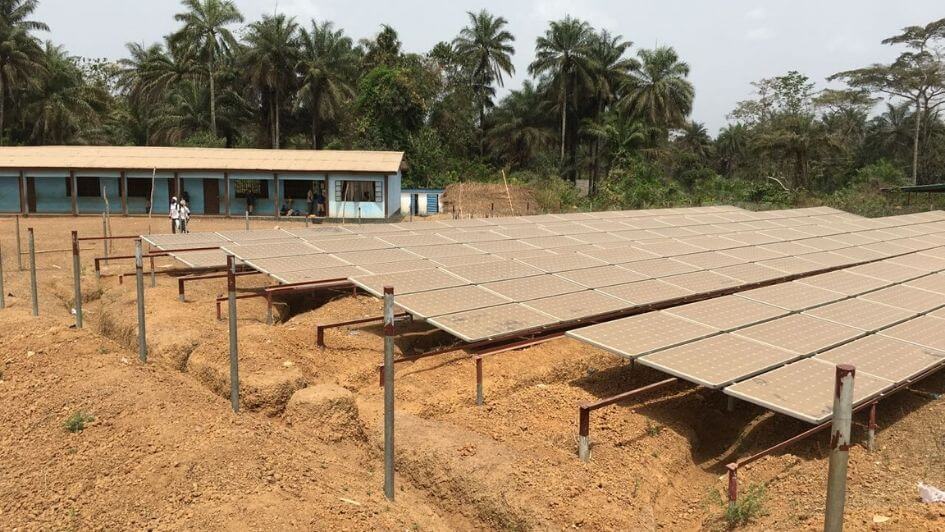Modern health services require electricity everywhere in the world. Yet today, health clinics and hospitals in sub-Saharan Africa and much of the developing world still remain underserved by the electrical grid. According to the World Health Organization (WHO), one in four health facilities has no access to electricity, and only a third of hospitals have reliable electricity access.
COVID-19 is exacerbating the situation as the pandemic spreads across sub-Saharan Africa. Besides requiring lighting and electricity to power ventilators and other essential medical equipment, rural clinics may act as a frontline system for triaging cases for further treatment at larger facilities. Calls for action have recently been put out by Damilola Ogunbiyi, the UN Secretary-General’s Special Representative for Sustainable Energy for All (SEforALL), and others.
Many health facilities across sub-Saharan Africa use diesel backup generators or do without power during blackouts. For critical health services like oxygen provision, policymakers are increasingly turning to renewable energy options.
In a pre-COVID-19 success story, for example, the 2018 installation of a 20 kW solar power and battery array in the Neonatal Intensive Care Unit in Bo General Hospital in Sierra Leone allowed for the uninterrupted operation of oxygen concentrators and baby warmers, causing infant mortality in the facility to plummet.
Making Energy Systems More Resilient and Economical
The diesel generator supply chain is riddled with volatility. Distributed renewable energy solutions including solar plus storage offer a reprieve. Where 24/7 power is required, distributed energy resources (DERs) are more resilient during crises and are cleaner and more cost-effective, even if supplemented by diesel back-up.
RMI has investigated adding resiliency to critical renewable energy infrastructure in the Caribbean in times of natural disaster (part one and part two). Providing uninterrupted power supply via batteries, DERs are also inherently “distributed,” being located at the site of the critical load they serve. This further improves resiliency.
Medical facilities must also consider economic and other costs like the impact of climate pollutants on health. In sub-Saharan Africa, diesel generators can cost from $0.31–$0.42/kWh in urban areas up to $1/kWh in rural settings. Because of the high levels of black carbon emissions and noise pollutants produced by diesel gensets, the WHO has recommended switching to renewable power.
In contrast, in Nigeria, commercial- and industrial-scale solar-plus-storage systems cost $0.14–$0.24/kWh and small-scale solar PV systems $0.22–$0.26/kWh over 20 years. These systems more than pay for their initial capital expenditure through operational savings, better air quality reducing negative health impacts on nearby populations, and less climate impact.
DER Solutions to Meet Increased Energy Needs within the Next 1-5 Months
It takes 10–16 months from initiation to completion to build a small capacity solar-plus-storage facility (70–200 kW solar and 200–500 kWh lithium-ion battery) that meets the needs of a moderate-sized health clinic or a small hospital in a developed country. Many health clinics can’t wait that long given the immediacy of the challenge of COVID-19 in sub-Saharan Africa.
There are a range of "pop-up" and premanufactured solar and battery systems that can in principle be deployed more rapidly for emergency response, including quick-deploy minigrid/microgrids that can be designed within weeks and installed within days, containerized solar and storage systems, solar-powered mini multiuse facilities, and minibox solar arrays.
What DER Solutions Can Meet Health Facilities’ Long-Term Needs?
COVID-19 is not the first health crisis in sub-Saharan Africa. A longer-term approach incorporating holistic planning at national and local levels is paramount to providing health clinics and hospitals with a resilient, cost-effective electricity supply. Such planning is best carried out nationally, to support economies of scale in equipment procurement, while recognizing that the burden of disease and exact equipment requirements will vary locally.
Holistic, full-facility 24/7 electricity must be provided to all areas of all health facilities. Maintenance budget lines must be created to ensure ongoing operations, and reputable service companies contracted to build resilient renewable energy systems to enable modern health care delivery every day and everywhere.
This will save lives today, and over the longer-term will help countries build resilient health systems, save on fuel costs, and avoid emissions contributing to climate change.
